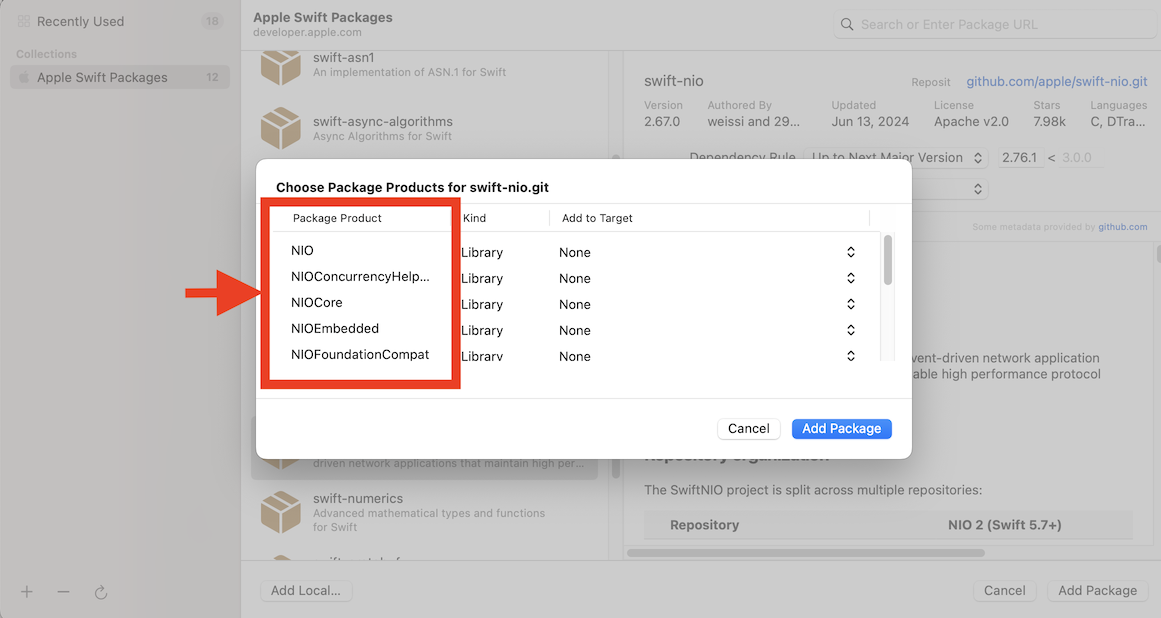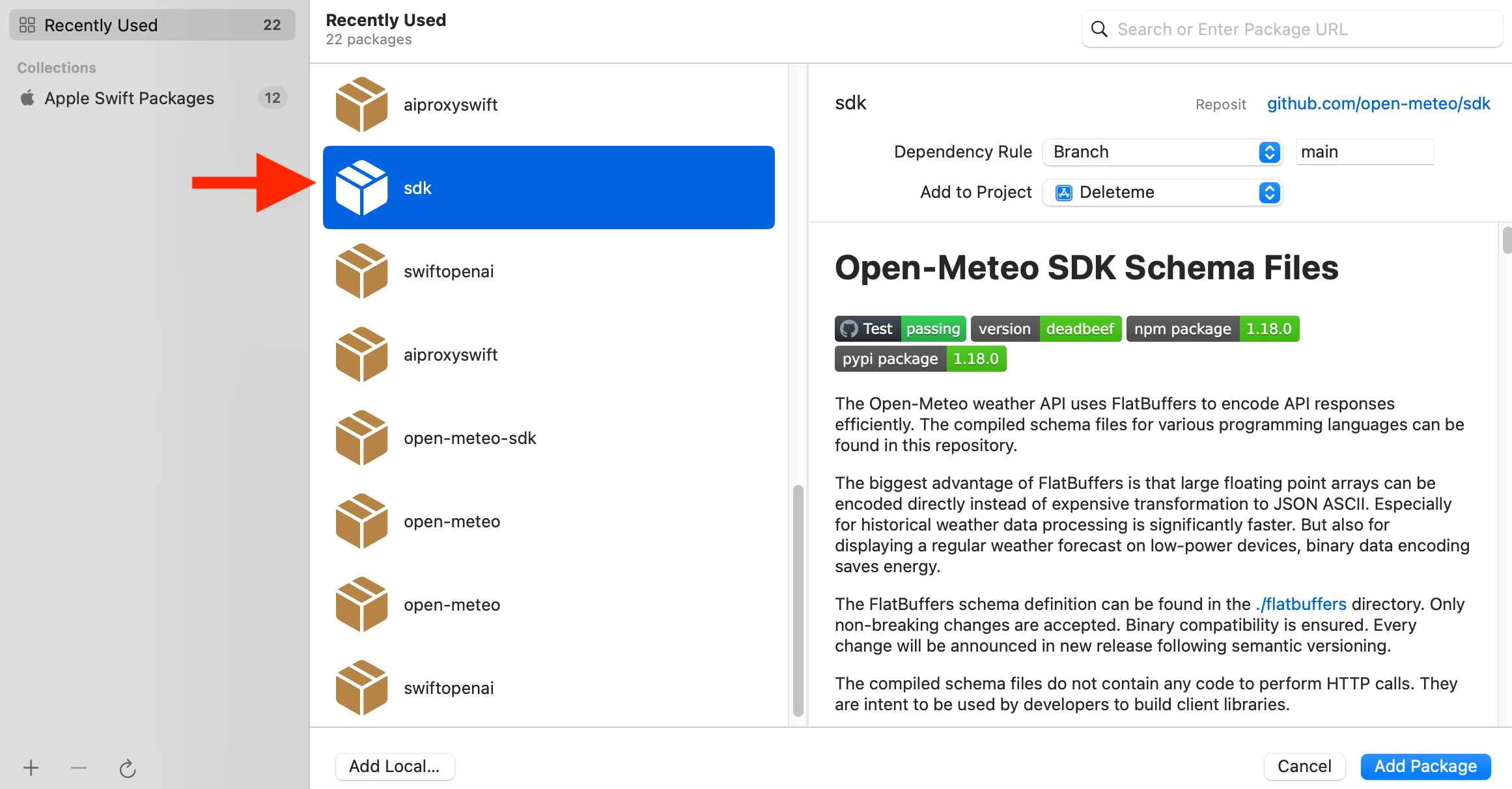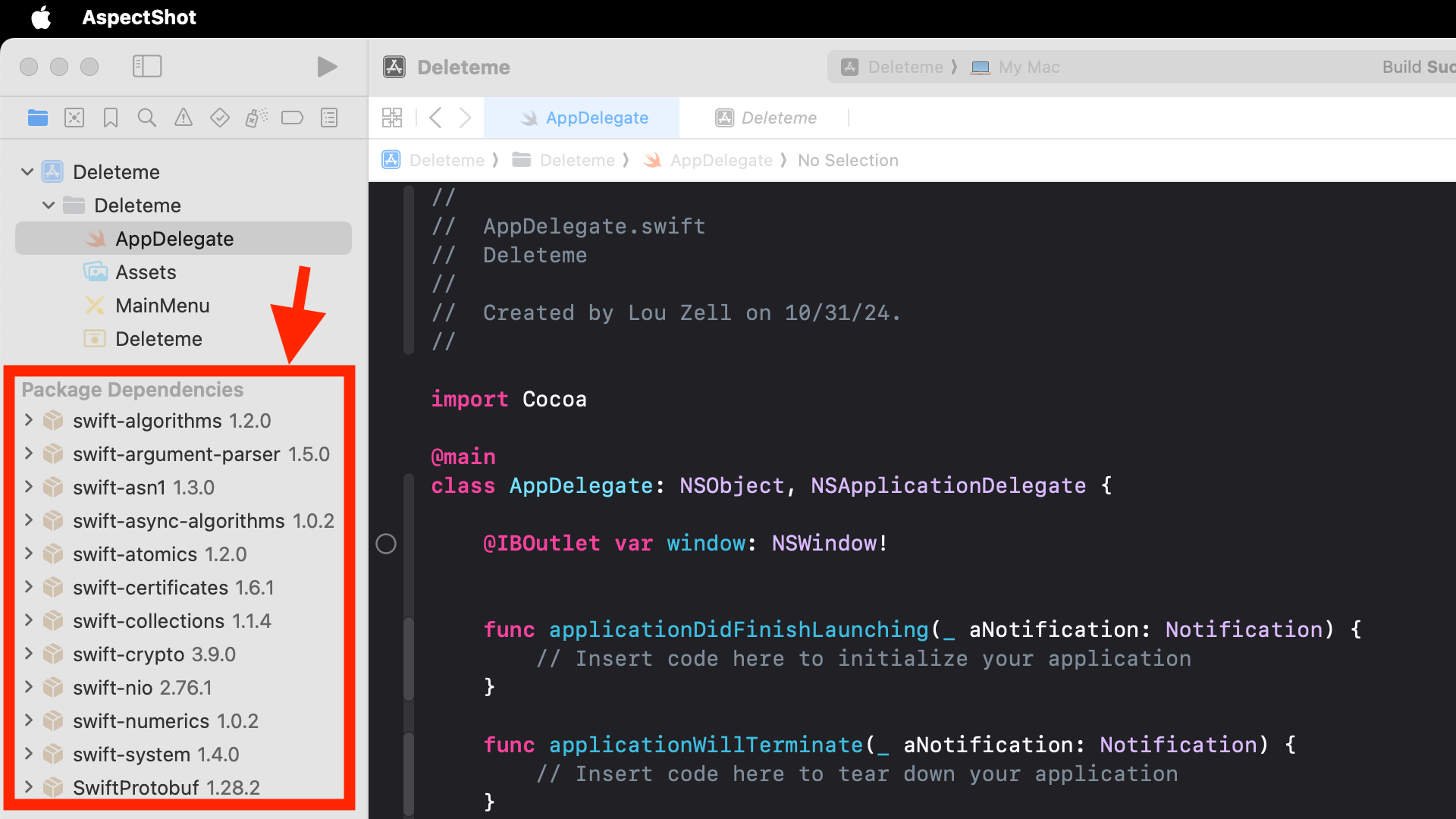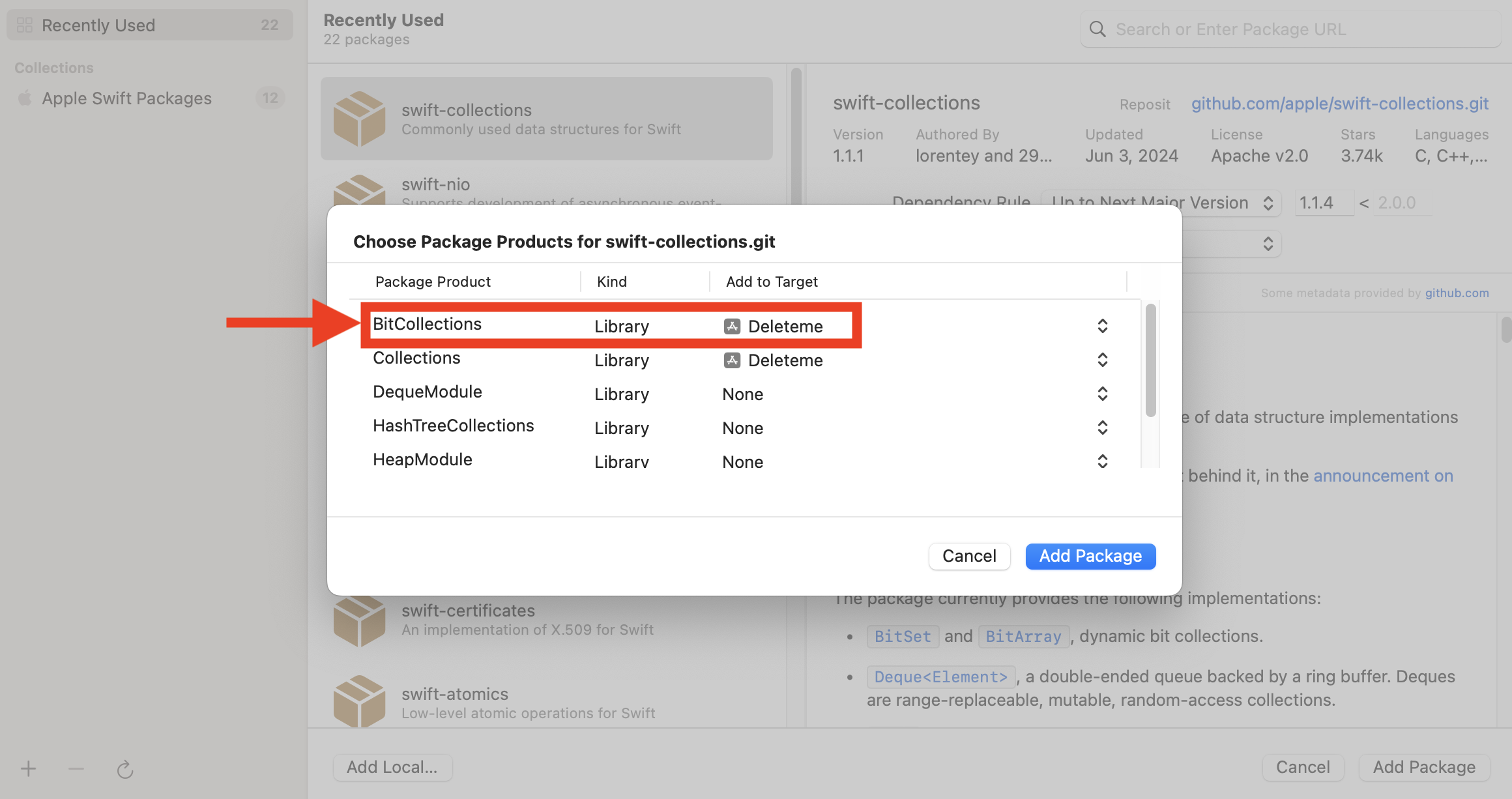Notes on SPM (SwiftPM) naming conventions
2024-11-01
There are three strings that have implications for users of your swift package:
The location of the package, specifically the last path component of your package’s URL. This is often the repo name, for example swift-protobuf in https://github.com/apple/swift-protobuf.
The name of the package. This is defined in the name field of the package’s Package.swift file. For example, swift-async-algorithms here
The product names within the package. This is what the user imports, e.g. import AsyncAlgorithms.
A single package can have multiple product names. For example, when you add the swift-nio package to your Xcode project, Xcode pops this modal:

each of these is a product defined here.
Of these, product names have the most consensus on style: they should be PascalCase. Location and package name do not have an agreed upon style (you’ll find many variations by browsing a community package list).
Selecting a naming scheme that works for you means understanding where these strings surface to users.
Where does the package location appear?
The package location is used in Xcode’s File > Add Package Dependencies flow in two ways, one expected and one unexpected.
Users find your package by searching for its full URL. Once found, Xcode uses the last path component as the identifier in the recently used packages view. This is a potential confusion point for your customers:

You can see here that Xcode is identifying this package as ‘sdk’, even though the name in the Package.swift file is OpenMeteoSDK. Xcode is using the last path component of https://github.com/open-meteo/sdk as the identifier.
Where does the package name appear?
The package name apears in the Xcode project tree (these are not the last path component of the package’s location).

Where does the product name appear?
The product name is what your customers import, and is displayed in the File > Add Package Dependencies flow as a list of possible products that your customers can add to their target.
In the image below I’m adding the BitCollections product to my Deleteme target. I can then import BitCollections in my target’s source.

Also, if you include your SPM package in another SPM package, the consumer will specify your product name as follows:
let package = Package(
// ...
dependencies: [
.package(url: "https://github.com/apple/swift-async-algorithms", branch: "main")
],
targets: [
.executableTarget(
name: "MyApp",
dependencies: [
.product(name: "AsyncAlgorithms", package: "swift-async-algorithms")
]
),
]
)
What does Apple do?
Apple hosts their packages, in most cases, such that the last url component and the package name match. These identifiers are formed using kebab-case, and start with the swift- prefix. See the results of this query for all their packages that fit this format. Looking at swift-async-algorithms, one sees that the last path component matches the the package name, while the product name is different: SwiftAlgorithms
An exception to this convention is the repo hosted at apple/swift-protobuf. In this case, the last path component is swift-protobuf, and the name is SwiftProtobuf. The product name matches the package name, so what users see in the Xcode project tree matches the string that they import. This, to me, makes a lot of sense.
What am I going to do?
I’m going to host my packages with kebab-case last path components, prefixed with swift. E.g. aiproxypro/swift-aiproxy. This gives users a clear identifier, swift-aiproxy, in the Add Package Dependencies flow.
I’m also going to limit products to one per package, and make the product name and package name match, both using PascalCase. That way, our customers can guess that the string they see in the project tree is the string they use in their import statement: import AIProxy.



